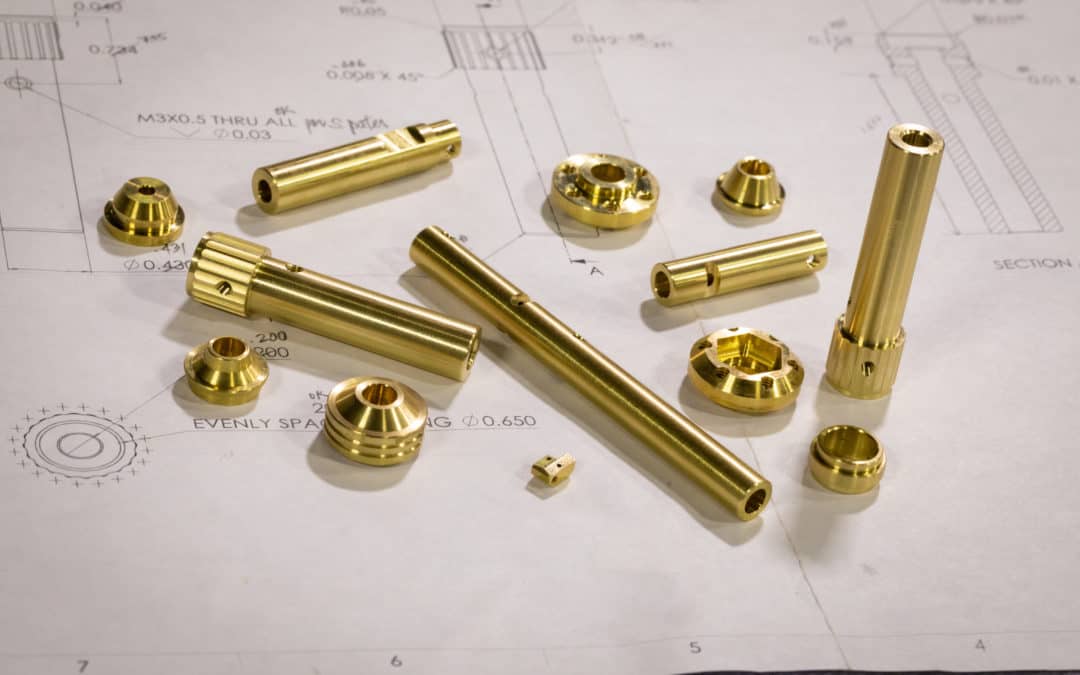When designing a new part, engineers often have some flexibility in specifying the material the part is made of. Component durability and performance are key factors in determining what metal to use but keeping part costs low must also be a prime variable in the equation. When you do the math, brass is a practicable and, in many cases, superior alternative to other commonly machined metals.
Today’s complex part designs demand not only quality but production that yields parts quickly and economically. Brass remains an excellent choice to satisfy all three of those requirements. While potentially more expensive initially than carbon steel, stainless steel or aluminum, the initial cost is only a small portion of the overall manufacturing scheme. When looking at its total machining lifecycle, brass components are more economical to produce per part and can be turned out quicker.
With a 100% machinability rating, free-cutting brass can be machined up to five times faster than steel under conditions where both metals maintain the same cutting tool life. Steel alloys require lower speeds and feeds that contribute to higher machine and tool wear, and aluminum machining can produce process-clogging stringy chips. The obvious benefits of brass’ machining efficiency are:
- shortened machine times,
- decreased labor costs and
- reduced consumables such as cutting tools,
which make up the bulk of per-part costs. Savings in any of those categories can significantly reduce a shop’s unit cost.
Increased throughput with brass also allows shops to make quick work of part runs and opens up additional time on their machines, which decreases internal unit costs and improves the job’s overall profitability. Many shops find that machining brass enables them to cut seconds off cycle times – seconds that, when amassed throughout an entire production run or shift, amount to significant productivity increases. Further, open machine time from faster machining and more aggressive approaches allows shops to take on additional jobs and provides “Hero Time” to handle unexpected events and/or urgent shifts in priority. In short, open machine time translates to increased profitability with no sacrifice in quality, and those savings can be passed on to engineers on job costs.
Completing the brass machining cost equation, brass is readily available, green and sustainable. Brass loses neither its chemical nor physical properties in the recycling process (which is less energy intensive than recycling other metals) and can be reused an infinite number of times. More relevant to cost, brass scrap typically retains 75-90+% of its original value, offsetting initial raw material costs and further reducing what shops can charge per part. In fact, brass rods produced in North America contain >95% recycled content, demonstrating the exemplary circularity of brass achieved through established scrap buy-back programs.
Considering its complete production course, from raw material through economical machining to reclaimed scrap value, brass is one of the most cost-effective machining metals available. Lower machining costs paired with recyclability reduce overall manufacturing costs, and that translates to a cheaper cost per part. When viewed as a complete process, the numbers tell the tale: Brass can be significantly less expensive to machine than steel.
You can see for yourself just how profitable and beneficial designing your next project with brass can be by utilizing the Copper Development Association’s Machine Tool Payback Calculator.


Recent Comments